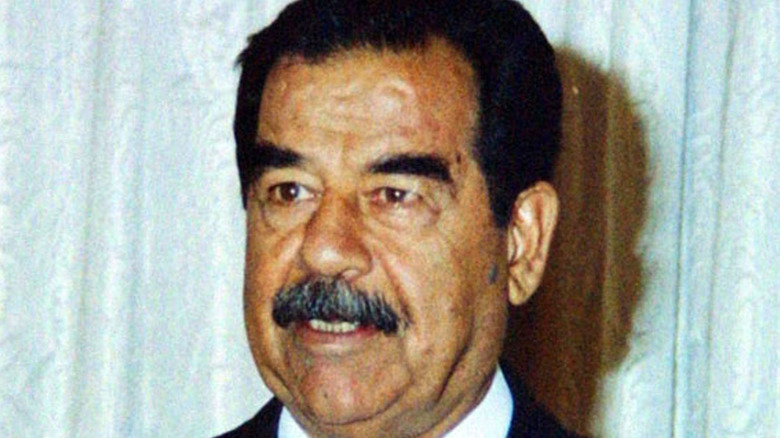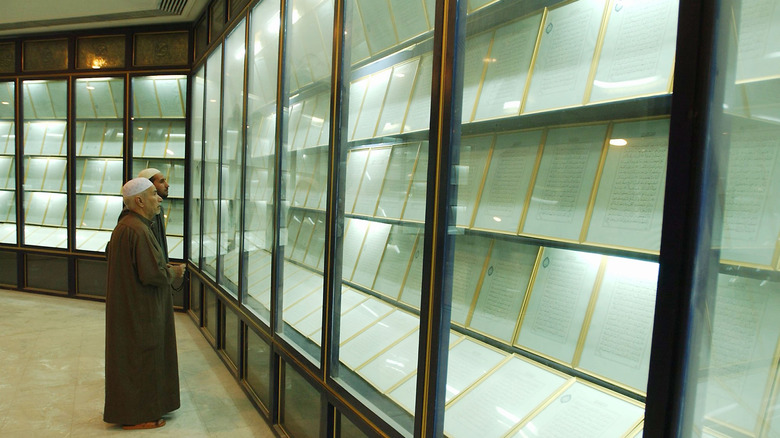The Truth About Saddam Hussein's Forbidden Blood Qur'an
In spite of his country's defeat in the 1991 Gulf War, Saddam Hussein remained president of Iraq for another 12 years. During this period he continued his iron-fisted rule as political and ideological opponents faced cruel torture and execution. Meanwhile, his so, Uday Hussein continued to engage in such acts and more for sadistic entertainment (via Los Angeles Times). Saddam's interest in his country's national character led him to initiate many expensive projects during the 1990s, from the construction of ornate mosques and monuments celebrating his 1991 "victory" over the UN coalition, to efforts to excavate and recreate the ancient City of Babylon (via Atlas Obscura).
One project he carried out in this spirit was conceived after his son narrowly escaped an assassination attempt. The normally secular leader had something of a religious reawakening after this event. In what he believed would be a symbol of his thanks to God for sparing Uday's life, Saddam hired a calligrapher to write a copy of the Qur'an for him in traditional script. The lasting source of controversy for this text is that it is supposedly written in the dictator's own blood, leaving scholars and the current Iraqi government in a precarious situation (via Today I Found Out).
There is little consensus on what to do with the Blood Qur'an
From Saddam's perspective, this offering was meant to symbolize the blood he and his family had been spared from shedding. For many Islamic scholars, however, it is a source of fierce debate (via The Guardian). On one hand, the book's apparent use of blood makes the entire thing an "unclean" object. On the other hand, it is still a Qur'an, and thus theoretically cannot be destroyed as other blood-based objects might be under Islam (via NBC). Despite this, there are proponents for its destruction due to the book's capacity for religious and political disruption, while others want to avoid the issues of destroying a Qur'an and preserve it.
There is also the question of how valid the claims surrounding the text even are. Since Saddam is unlikely to have contributed the amount needed without serious health complications, it is theorized that the text is supplemented by (or entirely composed of) either ink or the blood of prisoners (via Medium). The controversial text was once on display under Saddam, but now remains hidden behind three doors underneath his self-congratulatory Umm al-Qura Mosque (via Amusing Planet). Since the location of Saddam's remains are currently unknown, the book elicits conflicting feelings from his former subjects as one of his last biological and ideological traces.

